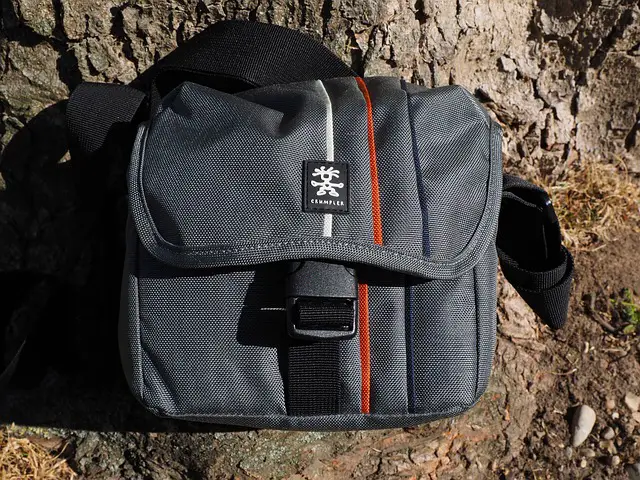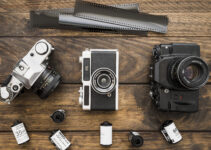How to repair foam inside camera bag?- Wondered?
Is your camera bag’s foam padding worn out or damaged?
Over time, the foam inside camera bags can degrade, losing its protective qualities and compromising the safety of your valuable gear.
Whether it’s from wear and tear, moisture, or a simple accident, damaged foam can leave your equipment vulnerable to impacts and scratches.
Fortunately, repairing the foam is often a straightforward process that can extend the life of your bag.
In this guide, we’ll explore effective methods to restore the foam padding, ensuring your camera and accessories remain secure and well-protected during your adventures.
Here, how to fit a mold in a camera bag?
Can you repair foam inside your camera bag yourself?
Yes, you can repair the foam inside your camera bag yourself, and it’s a relatively straightforward process. First, assess the damage to the foam; if it’s compressed or torn, you may need to replace it.
Purchase high-density foam from a craft store or online retailer, ensuring it fits your bag’s dimensions.

Remove the old foam carefully, taking note of how it was positioned. Clean the interior of the bag to remove any debris. Cut the new foam to size, using a sharp utility knife for clean edges. If necessary, you can layer the foam to create custom dividers or padding.
For added stability, use spray adhesive to secure the foam in place, making sure to follow the manufacturer’s instructions.
Finally, allow the adhesive to dry completely before using the bag again. This DIY repair can extend the life of your camera bag and better protect your gear.
Is it worth to repair foam inside a camera bag?
Repairing the foam inside a camera bag can be worth it, especially if the bag holds sentimental value or is high-quality.
Over time, foam can degrade, losing its cushioning and support, which can compromise the protection of your gear. Repairing the foam can restore the bag’s functionality and ensure that your equipment remains safe from impacts and scratches.
Additionally, replacing the foam is often more cost-effective than purchasing a new bag, especially if the exterior is still in good condition.
Here, what camera bag does peter lik use?
It allows you to customize the foam layout to better fit your current gear setup. However, if the bag is inexpensive or the damage is extensive, it may be more practical to invest in a new camera bag.
Ultimately, the decision should consider the bag’s condition, its importance to you, and your budget for camera accessories.
Things to know before repairing foam inside a camera bag
Before repairing foam inside a camera bag, consider a few key factors. First, assess the type of foam used; high-density foam offers better protection than standard foam.
Check for any additional damage to the bag’s interior or exterior, as this may impact your decision to repair. Measure the foam compartments accurately to ensure a snug fit with any replacement foam.
Look for a suitable adhesive; spray adhesive is commonly used for foam repairs, but ensure it’s compatible with both the foam and bag materials.
Think about your gear; if you’ve upgraded or changed your equipment, you might want to customize the foam layout for better protection. Lastly, evaluate the cost-effectiveness of the repair compared to buying a new bag.
If the repair costs approach the price of a new bag, it may be more prudent to invest in a new one instead. Proper preparation will lead to a successful repair.
How to repair foam inside camera bag?
To repair the foam inside your camera bag, start by removing the damaged foam carefully.
Use a utility knife to cut along seams, ensuring you don’t damage the bag’s lining.
Once the old foam is out, clean the interior to remove dust and debris. Next, measure the dimensions of the compartments to determine the size of the new foam you’ll need. Purchase high-density foam, which provides better protection for your gear.
Cut the new foam to fit the compartments, using a sharp knife for clean edges.
Here, what kind of fabric are camera strap made of?
If desired, create custom dividers by layering or cutting additional pieces of foam.
Use spray adhesive to secure the foam in place; apply it evenly and follow the manufacturer’s instructions for drying time. Finally, allow the adhesive to cure fully before placing your equipment back in the bag.
This DIY repair can extend the life of your camera bag and improve its protective capabilities.
9 steps to repair foam inside camera bag
5 Methods to repair foam inside camera bag
5 Benefits to repair foam inside camera bag
Related faq’s
How do you clean the inside of a camera bag?
To clean the inside of a camera bag, start by removing all gear and accessories.
Use a soft brush or handheld vacuum to remove dust and debris from the compartments.
For fabric interiors, lightly dampen a microfiber cloth with a mixture of water and mild soap, then gently wipe down surfaces. Avoid soaking the fabric to prevent moisture damage. For stubborn stains, use a soft brush to scrub gently.
Allow the bag to air dry completely before reinserting your gear. If your bag has removable liners, wash them according to the manufacturer’s instructions for a thorough clean.
How do I keep moisture out of my camera bag?
To keep moisture out of your camera bag, use silica gel packets, which absorb humidity and can placed inside compartments.
Store your bag in a cool, dry place and avoid leaving it in humid environments. When traveling, use a rain cover or waterproof bag to protect against unexpected weather. Consider using a camera bag with weather-resistant materials or seals.
Regularly check your equipment for any signs of moisture and allow the bag to air out if it becomes damp. Additionally, avoid placing your bag on wet surfaces, and ensure your hands are dry when handling your gear.
How do you keep a camera inside a camera bag?
Can you put a camera bag in the washing machine?
It’s generally not recommended to put a camera bag in the washing machine, as this can damage the bag’s materials, padding, and any electronics or compartments inside.
Instead, clean the bag by removing all gear and using a soft cloth or sponge with mild soap and water to wipe down the exterior and interior.
For fabric bags, spot-clean stains and allow the bag to air dry completely.
If the bag has removable liners or inserts that are machine washable, check the manufacturer’s instructions before washing them separately. Always avoid using harsh detergents or high heat.
Conclusion
Repairing the foam inside your camera bag is a practical and cost-effective way to extend its lifespan and enhance the protection of your valuable gear.
Whether you choose to replace, patch, or customize the foam layout, each method allows you to maintain the bag’s functionality while adapting to your evolving equipment needs.
By taking the time to repair and optimize the foam, you ensure that your camera and accessories are securely cushioned against impacts and scratches.
Embracing DIY repairs not only saves you money but also fosters a deeper connection to your photography equipment, allowing you to capture memories with confidence.







